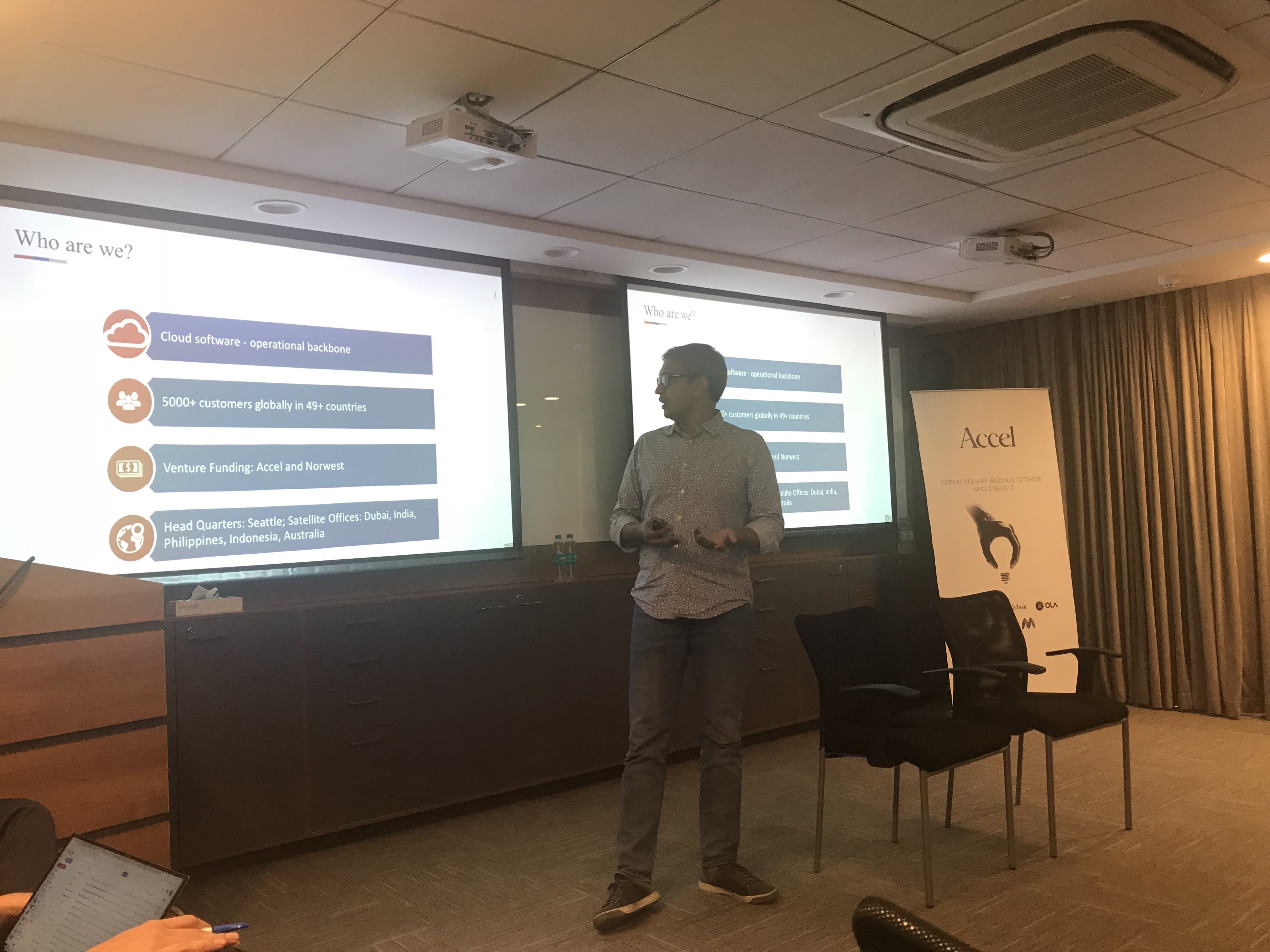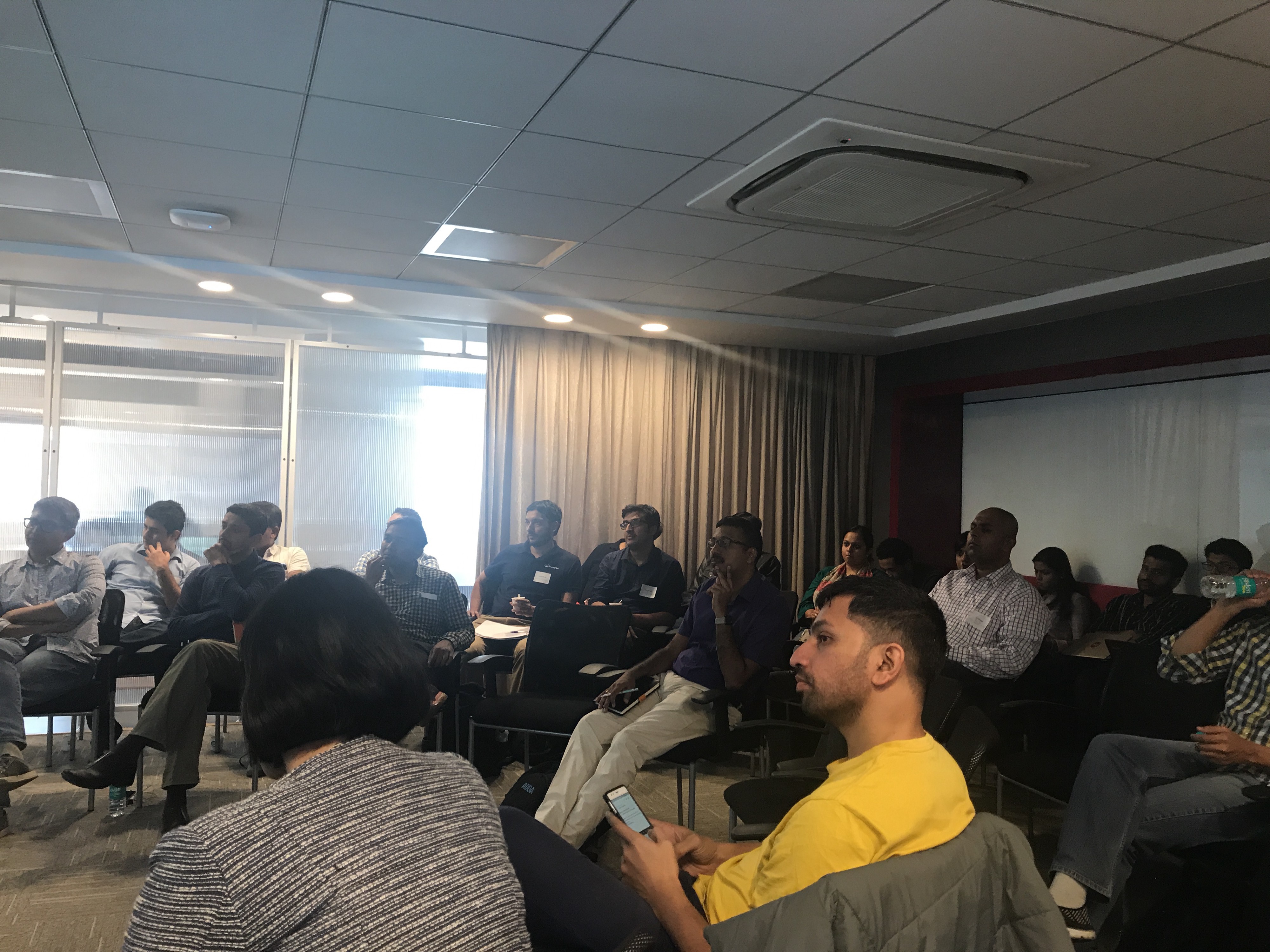Go to Market
Entering a New Market as a SaaS Business and Finding First Customers

Summary
International expansion is a logical step for any startup with a global vision. But it can be a complex one involving an overhaul of existing strategies, processes, and, most importantly, the mindset of the teams who now have to adapt to servicing customers with different needs and expectations.
Several of Accel’s portfolio companies — after initially building their products to cater to the requirements of Indian customers — have entered the US market and are building strong brands by evolving and adapting their business strategies and processes. to build strong brands in the US. We recently hosted a #LearnAtAccel session to explore practical insights into market research, pricing & GTM strategies for expansion into a new market.
To get hands-on, down-in-the-trenches insights, I had a conversation with two founders who have cracked the code: Zenoti’s co-founder Sudheer Koneru and MindTickle’s co-founder Mohit Garg. A couple of the prominent areas of interest were how the founders had to rethink their product and GTM approach for the US market. In addition, the challenge of finding and catering to the first few marquee customers as well as growing the customer base in the US market.

We share some of those lessons and insights from Sudheer and Mohit, along with questions from the audience here, to benefit anyone looking for the right perspective on their product-market fit journey.
1. Does it help to first build the product for the Indian market?
“Building a product for an emerging market (such as India) helps validate and refine it, before the product is introduced into a more mature market.” — Sudheer Koneru, Co-founder, Zenoti
There is a push-and-pull logic between perfecting a product for one market before moving on to others vs. moving quickly with an evolving product so competitors don’t replicate your model (before you have the chance to take it to new markets). But there is a fundamental principle that applies in either case: nail your MVP before you think of expansion.

Sudheer says that if they hadn’t had the opportunity to build and refine their product in India, they would not have been able to move into the US with a stellar MVP. An entire year was spent primarily on product development, making sure Zenoti’s SaaS solution was sufficiently ready for expansion.
Mohit, too, believes that validating their product’s value early on in the initial market was helpful in quickly taking it to a new market.
“We didn’t sell in 2013, but we probably met every single Indian customer’s sales team through the network. We just met with lots and lots of CEOs & sales leaders and validated that the sales enablement product opportunity was something interesting to pursue.” — Mohit Garg, Co-founder, MindTickle
Test, validate and refine your product as much as possible in your current location, plugging gaps in the basics that will apply universally. A good base product in the original market dramatically increases the probability of success when entering new, more mature markets.
2. What does it take to prepare a product for the US market?
“It is almost like building another company. You have to re-arrange jigsaw pieces (and add a few new pieces) to ensure that the product caters to the requirements of US customers.” — Sudheer Koneru, Co-founder, Zenoti
This triggered an interactive and interesting discussion amongst the panelists and participants. We will address the product aspects of entering a new market in a separate post. However, it is worth pointing out that the consensus was that with changing customer requirements a fresh look at the product is necessary. Pre-sales and post-sales activities (i.e., deployment, migration, etc.) too need to be rethought and realigned with the new market.
Equally importantly, pricing often needs a radical change and has to be redefined from the ground up. For this, one has to understand the value chain of the new market and ensure that the company adopts a value-based pricing strategy for the new market.
3. How do you get started in a new market?
“To get started, you don’t need 50 customers. You need 5–10 prospects, a handful of customers, and one good success story.” — Mohit Garg, Co-founder, MindTickle
Many startups throw their product at the proverbial wall to see if it sticks. Mohit suggested that it is better to take a ‘less is more’ route. Instead of, say, making 80 cold calls a day, it is more efficient to define and identify desirable customers, and then tailor focussed efforts to go after them to ensure that your product captures their attention. For example, a few, personalised emails often get a better response than a barrage of generic emails sent to a non-targeted customer set.
In other words, a startup does not need a lot of Sales Development Reps (SDRs) in the beginning — especially if you’re going after enterprise accounts. Mohit sold the first 50 deals himself, carefully nurturing and building personal relationships with customers, and leveraging deeper market knowledge (gained from his interactions with potential customers) to help evolve product to cater to the new market.
“Because we spent time with these companies, the signals became clearer,” says Mohit.
He says that he continues to receive and respond to emails from his initial leads and customers, and feels that this direct connect helped him build a better appreciation of sales challenges.
4. How do you identify the first set of customers?
“Ideally, the first set of customers in a new market should give you an opportunity for co-creation.” — Mohit Garg, Co-founder, MindTickle
Given that a startup only needs a few relevant customers in the beginning, it is important to identify the right companies and people to work with. Mohit and Sudheer suggested that founders find not only those who have a need for their product, but also customers who will be open to providing inputs and requirements to help improve it.
And, of course, it helps when these first customers are referenceable which enables you to showcase value to other potential customers.
Working alongside the first customer to build the product can accelerate time taken to get to product-market fit. For Zenoti, these customers came in through research and creative account-based marketing. MindTickle built its early US customer base through investors, and other advisors as well as through warm introductions from the existing set of Indian customers to their American counterparts.
In many ways, though, acquiring the first customer was their biggest challenge. It required a rapid evolution of the product to cater to different sets of customer requirements and needs. This, in turn, triggered a hyperactive phase that helped shape the product for the new market in a relatively short time with a clearer articulation of the value proposition. For MindTickle, it helped determine the right point of entry for a sales enablement platform (eg: when they’ve hired two sales leaders) and, thereby, helped create the sales playbook that helped MindTickle to sustain its growth even as it grew larger.
5. Be cautious about the cost of expansion
It is expensive to enter, operate and compete in new markets. Especially in the case of SaaS companies, recovering investment in a new market may take several months and rapid cash burn can become a serious risk. Both Sudheer and Mohit were actively involved in hands-on execution in the early stages in order to manage and conserve resources.
The Zenoti team limited their geographic reach to their “own backyard” in the early days — Hyderabad and Seattle — finding their initial customers there, learning their lessons and then expanding to other cities. MindTickle adopted a ‘land and expand’ strategy that enabled them to acquire customers with fewer resources and then gradually grow these customers into large accounts.
The workshop provided a perspective on how SaaS companies should prepare for and enter a new market. There may be no silver bullet to get there, but there are tried and tested strategies and tactics to help accelerate the learning required to successfully capture and lead in a market category.

Incidentally, other audience questions included:
- Other than the product changes, did you have to make a lot of changes in the process also?
- Did you have to create a new team specifically catering to the US market or was a subset of the existing team repurposed?
- How did you find the right pricing for the US market? When should a company expose their pricing publicly?
- How did you transition from monthly subscription plans to longer-duration plans?
If you are interested in finding out answers to these questions or have other related questions, please feel free to share your comments in the section below
Related Articles:
We’re looking for the next generation of successful Indian marketplaces. If you’re an early-stage marketplace founder, apply now here or learn more about the #DecodingMarketplaces Startup Hunt.
We’d love to hear about your experiences with marketplaces. Let us share our learnings and build a better and stronger ecosystem. Write to us at seedtoscale@accel.com to be a part of the Accel family.
Subscribe to SeedToScale
/subscribe to get the latest stories from SeedToScale/



